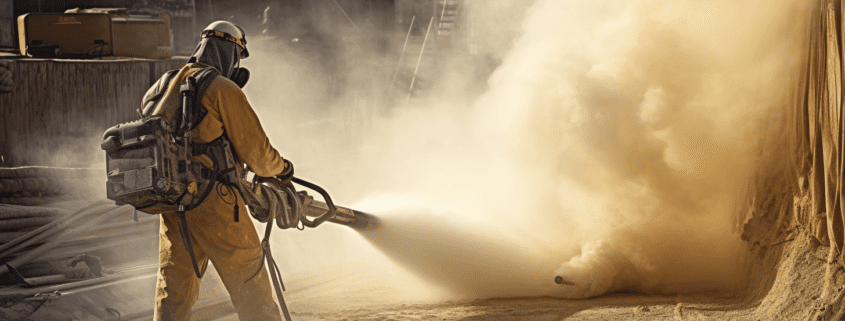Dust Control in Construction: Minimising Dust during Demolition and Renovation in Perth
Construction and renovation projects play a vital role in shaping the modern landscape of Perth and its surrounding suburbs. However, one inevitable challenge that arises during such projects is the generation of dust. Dust not only poses health risks to workers and nearby residents but also contributes to environmental pollution. As a Dust Blasting Specialist serving Perth and its surrounding areas, we understand the importance of dust control in construction. In this blog, we’ll explore effective strategies to minimise dust during demolition and renovation, ensuring a safer and cleaner construction process.
1. Understanding Dust Generation
Before delving into dust control measures, it’s essential to understand the primary sources of dust during demolition and renovation. Common sources include:
- Demolition of structures and materials
- Cutting, grinding, and sanding activities
- Drilling and excavation
- Concrete and masonry work
- Asbestos removal
Each of these activities can release fine particles into the air, creating airborne dust that can spread over a wide area if not controlled.
2. Planning and Preparation
Proper planning and preparation are crucial for effective dust control in construction projects. Before starting any demolition or renovation work, consider the following:
- Conducting a comprehensive risk assessment to identify potential dust sources and exposure risks.
- Implementing a dust control plan that outlines specific measures to mitigate dust generation and dispersion.
- Ensuring all workers are educated about the importance of dust control and are equipped with the necessary personal protective equipment (PPE).
3. Enclosure and Isolation
Enclosing the construction area is an effective way to minimise the spread of dust to neighbouring properties and public spaces. Use barriers, fencing, or temporary walls to isolate the work area. This containment strategy prevents dust from dispersing widely and allows for better control during the dust removal process.
4. Wet Dust Suppression
Water is an excellent ally in dust control. Employ wet dust suppression techniques to keep dust particles from becoming airborne. Methods such as wet cutting, misting, and damping surfaces can significantly reduce dust during cutting, drilling, and demolition activities.
5. Vacuum Systems and Dust Extractors
Invest in high-quality industrial vacuum systems and dust extractors to capture airborne particles at the source. These systems effectively remove dust and debris, enhancing worker safety and reducing the environmental impact.
6. Regular Cleaning and Maintenance
Frequent cleaning of work areas and equipment is essential to prevent dust buildup. Regularly sweep, mop, or vacuum the construction site to keep dust levels low. Additionally, inspect and maintain dust control equipment to ensure optimal functionality.
7. Use of Eco-Friendly Dust Blasting Techniques
As a Dust Blasting Specialist, we prioritise eco-friendly practices. Our dust blasting techniques use environmentally friendly materials and advanced equipment to efficiently remove dust and contaminants without harming the surroundings.
Dust control in construction is a critical aspect of responsible building practices. By implementing effective strategies such as containment, wet dust suppression, and using dust extraction systems, construction companies can minimise the impact of dust during demolition and renovation. As your trusted Dust Blasting Specialist in Perth and surrounding suburbs, we are committed to providing top-notch services to keep your construction projects clean, safe, and environmentally friendly. Partner with us to make your construction sites dust-free zones, contributing to a healthier and more sustainable environment for everyone.



